Screening of film/video oeuvre ’80-’10
Screenings and talks
Wednesday, 31 Janauary 2024, 8pm
Slovenian Cinematheque, Miklošičeva cesta 28, Ljubljana
Programme (January-April 2024)
31 January / 28 February / 12 March / 24 April
Production: SCCA-Ljubljana and Slovenian Cinematheque
Curator: Robert Kuret
- Unknown Land I: FV, 31 January
- Unknown Land II: Borghesia, 28 February
- Unknown Land III: ZANK, 12 March
- Unknown Land IV: Novi novi film, 24 April
- Biography
- Colophone
Neven Korda is an artist who has contributed significantly to developing video as a new medium. He creatively expressed himself through various periods, experimenting with the expressive possibilities of media that produced video.
A survey of Korda’s works will be organized into four programmatic strands, which follow the development of his creativity, each linked to a specific historical, production, genre, and collaborative context. Except for his last period of filmmaking, Neven Korda has been a part of various collectives where authorship has been declared joint.
The programme Unknown Land I: FV is eclectic, featuring 1980s and early 1990s material. The films presented in this programme tend towards the documentary form, recording the scene of the FV conglomerate and relating to the end of the shared state in the context of the emerging alternative television A-TV. Unknown Land II: Borghesia marks the 1980s when Korda developed the music video form in the context of his work in the multimedia group Borghesia. Unknown Land III: ZANK focuses on the 1990s and Korda’s collaboration with Zemira Alajbegović. This period saw Korda continue to explore the potentials of both video form and soundscapes while creating more narratively focused narratives – a kind of psychedelic (docu) fiction. The programme Unknown Land IV: The New New Film presents works from the post-2000 period. After exiting the studio system and collective production, Korda turned to an experimental video form, which he processed on a personal computer.
Robert Kuret
Unknown Land I: FV
Wednesday, 31 January, 8 pm
Slovenian Cinematheque, Miklošičeva cesta 28, Ljubljana
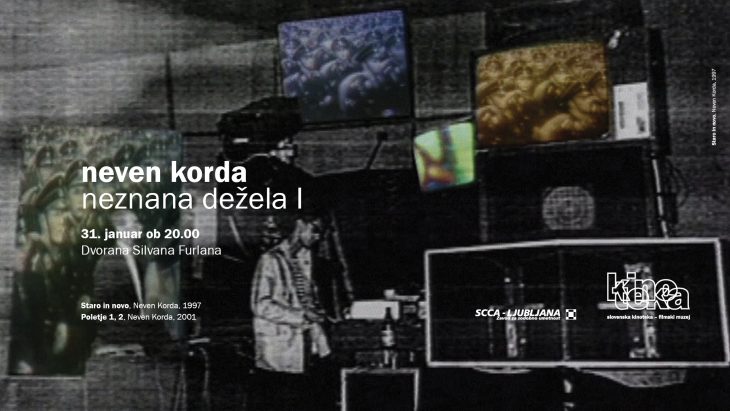
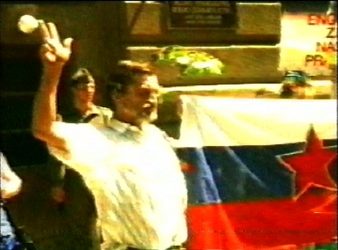
Author: Neven Korda, Slovenia, 2001, digital format (shot on VHS, V8, mini DV), color, 26′
» video
The story of a cardboard box. June 1988, an archive of footage of the scenes of the revolt in the context of the trial against the Four: the Slovene Writers’ Association, meetings of the Committee for the Protection of Human Rights, Radio Študent, where the radio’s employees barricaded themselves in, Roška, Metelkova, and also Congress Square, which is the film’s central location. FV Video and Brut Film produced the film, digitised and edited at Kapelica Gallery, K6/4 Institute, 2001. The monitoring/recording of these events was FV Video’s last project.
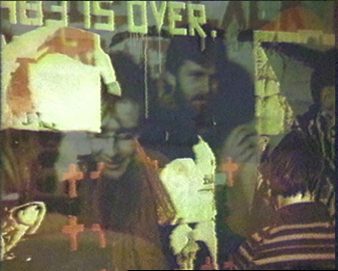
Directir: Neven Korda, screenplay: Zemira Alajbegović, Slovenia, 1997, digital Beta (shot on VHS, V8, mini DV, U-matic Lband, Beta SP. Edited on D5), color, 66′
» video
The documentary reconstructs the bustling Ljubljana subculture scene of the 1980s, to which the authors belonged. They have combined many documents and video clips from 1982 to 1989 into a one-hour story with multi-layered and fast-paced editing of images and sound, in which emotions and personal views intertwine with the socially critical subculture and the broader historical context – the Yugoslav socialist system. The film alternates between performances by the FV 112/15 Theatre, concerts by punk bands in the underground Disco FV clubs, and multimedia performances by the Borghesia group; images from pornographic films intertwine with images of elderly socialist bigwigs and political rituals. In the 1980s, the first gay club and women’s club were launched at Disco FV, philosophers like Slavoj Žižek debated the relationship between punk and the ruling culture, etc. Subculture stimulated and anticipated the shifts that engulfed the socialist regimes in the 1980s. The Old and the New revive this heroic time, preserving the marginal, marginal side of the great, official history, writing the history of those whom history excludes.
Unknown Land II: Borghesia
Wednesday, 28 February, 8 pm
Slovenian Cinematheque, Miklošičeva cesta 28, Ljubljana
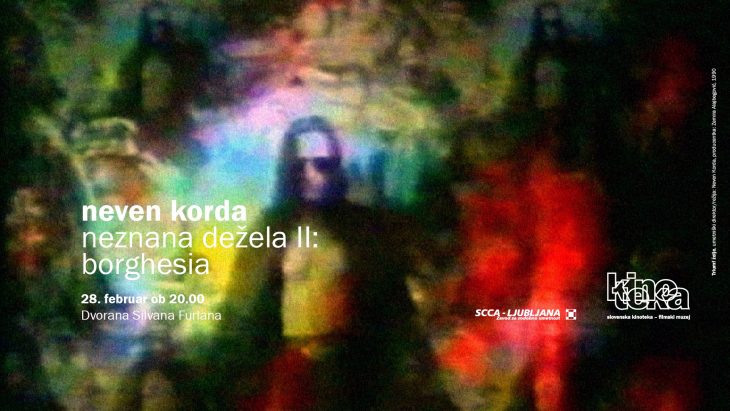
The Borghesia group (Zemira Alajbegović, Goran Devide, Aldo Ivančić, Neven Korda, Dario Seraval), which grew out of the activities and production of the FV conglomerate, released the videocassette So Young (Tako mladi) in 1985, which was the first VHS compilation of music videos in the former Yugoslavia. The band’s goal was to create music and establish a multimedia expression in which the video image played a key role. This already characterized Borghesia’s stage performances – a kind of video performance – represented by the use of monitors and projectors: this already hinted at the editing processes and the layering of images that would later be present in their music videos.
Borghesia was one of the first Yugoslav bands to emphasize the video as an integral part of their presence. In 1985, their first LP, Ljubav je hladnija od smrti (Love Is Colder than Death), was released, and that was also the year when they closed the K4 club, which meant the closure of the last FV space. The club’s activity thus shifts to the organization of concerts, and the publishing activity (discographies, videocassettes) also begins to take shape.
So Young (videos Cindy, A.R., and ZMR) were produced in hard-cut video editing, where it was impossible to influence the texture and speed of the image. Therefore, Korda manipulated the image’s speed, colour, and geometry with special procedures before editing.
This process changes with the second videocassette, The Triumph of Desire (Triumf Želje), released by FV in 1990, which Korda was finishing during the then-Borghesia break-up. Here, the video montage itself is a tool of manipulation. The Triumph of Desire is a compilation of video clips, tour documentation, and the performance Futurists (Bodočniki), made between 1987 and 1989, which continues the iconography of So Young. Here, Neven Korda’s aesthetics reaches its peak as he exploits the givens of the video medium. While celluloid records an image of depth, where it is possible to create different planes through the play of light and shadows, the electronic image of video cannot do so. The richness and layering of space are thus created primarily through image layering, which results in the saturation of the image characteristic of Borghesia’s spots.
Robert Kuret will talk with Neven Korda.
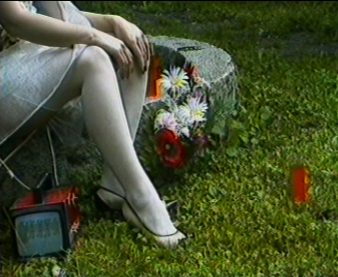
Authors: Borghesia, Marina Gržinić, Slovenia (Yugoslavia), 1984, Beta SP (shot on U-matic Lband), color, 4′
The protagonists of Cindy’s video occupy the apocalyptic space of an abandoned villa. The people in the video are primarily static, existing in a still-life mode.
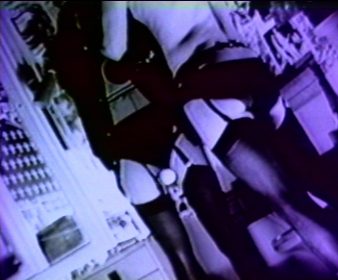
Author: Borghesia, Slovenia (Yugoslavia), 1984, Beta SP (shot on U-matic Lband), color, 5′
The dynamics of the video are created by combining positive and negative shots of different urban and subcultural events. Traditional and alternative cultures are in constant struggle.
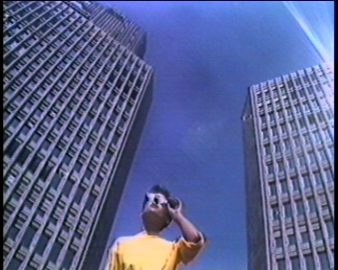
Author: Borghesia, Slovenia (Jugoslavia), 1984, Beta SP (shot on U-matic Lband), color, 4′
It is an atypical Borghesia video: static, monumental, melancholic. It presents the urban environment with shots of modern and neoclassical architecture. The static female figure is numbed and present in this environment in the manner of a sculpture; the vividness of the skin and the movements are still barely perceptible.
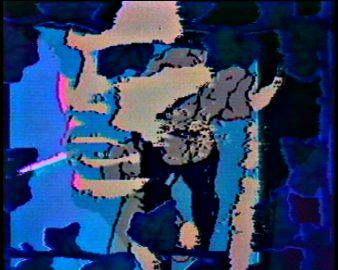
Art director/director: Neven Korda, producer/script: Zemira Alajbegović, Slovenia (Jugoslavia), 1990, Beta SP (shot on U-matic Lband), color, 63′
It is a compilation of music videos by Borghesia (Document, G.U.M., Poppers, Triptych Futurists, No Hope No Fear, Discipline, Mud, She, Venceremos). It continues the iconography already hinted at in So Young. With images and symbols, he focuses on alternative movements that have remained on the margins from the Yugoslav cultural past to the present.
Unknown Land II: Borghesia
28 February – 6 March
» View at Slovenian Film Database (BSF)
The Unknown Land II: Borghesia programme at the Slovenian Film Festival will – like the first part of the programme – return to the period of the first half of the 1980s and will show both the rich musical production and the ways of documenting it. In addition to Borghesia, some of the other stakeholders of the alternative scene that the FV conglomerate helped to shape will be shown: representatives of Ljubljana punk and hard-core. The compilation So Young (Tako mladi), which was the first VHS compilation of music videos in the former Yugoslavia, will also be available in its entirety, where we can see different methods: archive footage from the FV Disco, the use of images Korda shot from television, as well as more fictionalized music videos.
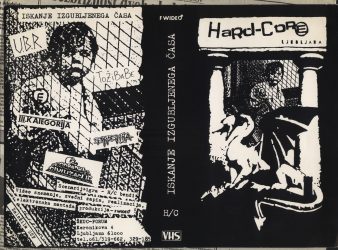
Director: Neven Korda, Slovenia (Jugoslavia), 1985, 26′
A compilation of music videos by Ljubljana hardcore bands U.B.R., Tožibabe, Odpadki civilzacije, Epidemija and III. kategorija. The videocassette is a collage of documentary, feature and other footage; each band performs two or three songs. The scenes, filmed in the suburbs of Ljubljana, in basements, and the then Lenin Park, are often crude expressions of hardcore everyday life, of the search, fear, rage, as well as cynicism and self-irony of the actors of this subculture.
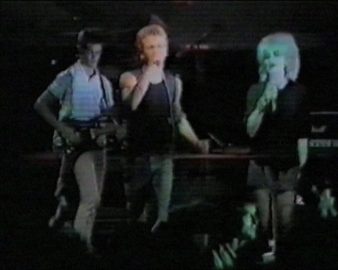
Author: Neven Korda, Radmila Pavlović, Niet, Slovenia (Jugoslavia), 1984, 20′
Music videos of punk band Niet, filmed at the New Rock 1984, in the working-class settlements and on the streets of Ljubljana.
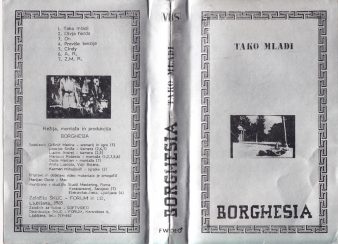
Author: Borghesia, Slovenia (Jugoslavia), 1985, 31′
A compilation of music videos by Borghesia (Tako mladi, Divja horda, On, Too much tension, Cindy, A.R., ZMR), which was released as the first videocassette with music videos in the broader region of Yugoslavia by FV in 1985. These are small, almost cinematic stories, dealing mainly with the iconography of the body in urban space. One of the spots uses pioneering computer graphics.
Unknown Land III: ZANK
Tuesday, 12 March, 8 pm
Slovenian Cinematheque, Miklošičeva cesta 28, Ljubljana
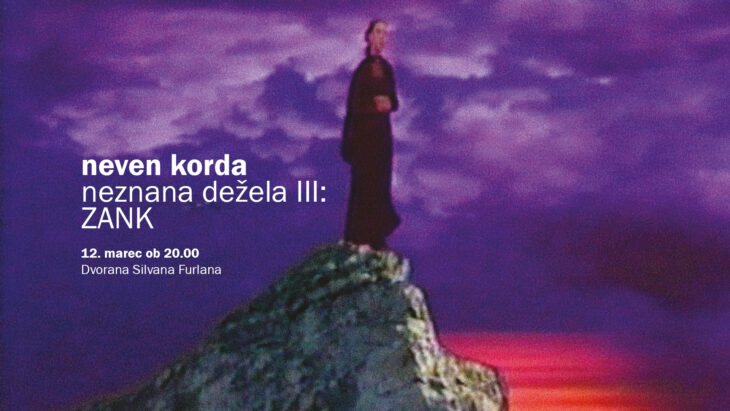
After Neven Korda and Zemira Alajbegović left the Borghesia, they became a creative duo in the 1990s, which materialised in 1998 as the ZANK Institute. During this period, Korda continued to be involved in various studio systems and television production, giving him access to advanced technology that allowed him to work on films.
Each of the three films shown had a different production environment in terms of editing and manipulation of the material: post-production of Intolerance was done at Studio MI, The Sand Collectors at VPK, and Autobus was done at the RTV studio. The post-production was already included in the director’s book for Autobus and The Sand Collectors. At the same time, Korda created the visual image of the film space for Intolerance only during the editing process. The film was, therefore, a year in the making.
Here, Korda continued the logic of creating space in the context of video, which was already present in the videos for Borghesia: the main advantage of video and image layering for Korda was that, as a filmmaker, he was not bound to the image recorded by the camera, but could completely rework it in post-production: the mise-en-scene and its depth, which would have been created on the film strip with light and shadows, was transformed into “mise-en-layers”.
The unity of the production of the films presented in this series was achieved by first creating a soundtrack for all of them: the music, the narrator’s voice, the monologues, the dialogues, the noises and other sounds were edited, and from this, the author began to build the picture. Intolerance’s soundtrack is much denser than Autobus and The Sand Collectors: the latter is visually and sonically oriented towards functionality, while Intolerance radicalises collage tendencies on both visual and sonic levels.
Robert Kuret will talk with Neven Korda.
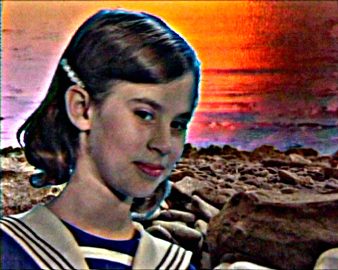
Director: Neven Korda, script: Zemira Alajbegović, Slovenia, 1995, Beta SP, colour, 12′
Video work tells the story of an art collector as remembered by herself in her old age and as narrated by her friend, a psychoanalyst. Through this narrative, the authors deal with the spirit of avant-garde art in the first half of the 20th century.
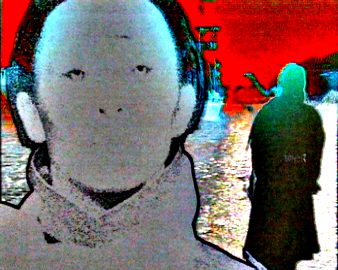
Director: Neven Korda, script: Zemira Alajbegović, Slovenia, 1993, Beta SP, colour, 11′
The narrator searches through documents and reconstructs Lela’s life: in the Middle Ages, she was accused of witchcraft; in the 20th century, she finds herself amid war; and in the future, she will leave the planet.
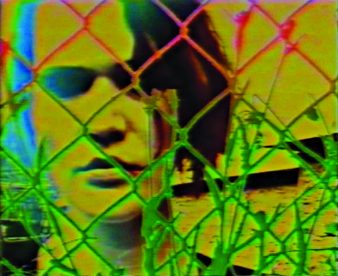
Director: Neven Korda, script: Zemira Alajbegović, Lela B. Njatin, Slovenia, 1991, Beta SP, colour, 33′
It is based on a novel by Lela B. Njatin, an extremely fragmented piece of narrative. The heroine experiences only fragments of events. She gets involved in meetings that start but never end. She has wishes that are outlined but never consumed. The delusive and ungraspable images fluctuate between reality and dreams.
Unknown Land III: ZANK
12 – 18 March
» View at Slovenian Film Database (BSF)
After Neven Korda and Zemira Alajbegović left the Borghesia, they became a creative duo in the 1990s, which materialised in 1998 as the ZANK Institute. During this period, Korda continued to be involved in various studio systems and television production, giving him access to advanced technology that allowed him to work on films.
Slices of Time is one of the most distinctive documentary works in the oeuvre of Neven Korda and the duo of Neven Korda and Zemira Alajbegović. It is an intimate documentary, as it is the story of both of Zemira Alajbegović’s grandmothers.
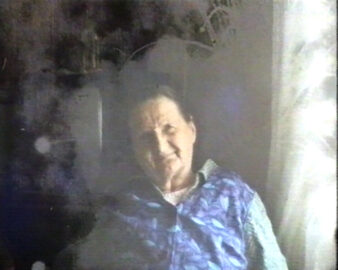
Zemira Alajbegović, Neven Korda, Slovenia, 2001, 60’
The documentary follows the stories of two older women (the artist’s grandmothers) born during the First World War, after which the Austro-Hungarian Empire fell apart and a new state, Yugoslavia, was established. They lived in different cultural and religious environments in Yugoslavia, in Bosnia (mostly Moslem) and Slovenia (mostly Christian), yet they were connected through their children and grandchildren.
Unknown Land IV: New New Film
Wednesday, 24 April, 8 pm
Slovenian Cinematheque, Miklošičeva cesta 28, Ljubljana
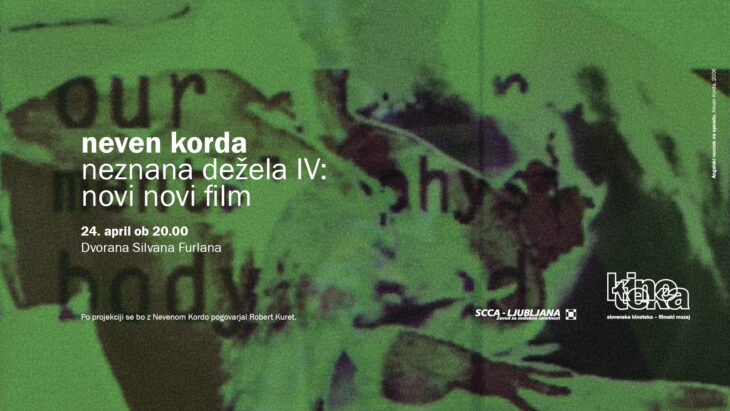
The new millennium marks a break with professional production, and Neven Korda moves to independent work on his computer. Until the 2000s, all his video productions were made in TV production environments, while the switch to the PC allowed him to observe the medium even more closely. With the New New Film (NNF) series, Korda returns to the conceptualism of the 1970s, when repetitive manifestational statements are an essential mode of expression, and to the structuralist film of the 1960s, when the celluloid tape becomes a message.
The films are highly experimental, focusing on feedback loops, which had already served him in Triumph of Desire to create the texture of the video image. In doing so, he returns to the idea of the multi-channel video projections he performed live in the 1980s: a pure video representation of the concept of the video signal.
With NNF, Korda ventures into an environment of low resolutions, small formats and simple sound. He uses petite frames in a mosaic way to create larger wholes, and he also works with live video manipulation, using keyboards and potentiometers to adjust the set parameters.
In the NNF, technology reaches the highest degree of independence in Korda’s oeuvre and becomes a critical condition for thinking about content: the films are based on the disruption of the medium, while the social constantly emerges from them (manipulation of political speeches, use of slogans, etc.). The ideological message and the formalism are in a dynamic relationship, and the films create a densely intertwined web where the same motifs keep returning in different audiovisual variations.
Robert Kuret will talk with Neven Korda.

Author: Neven Korda, Slovenia, 2001, digital format, colour, 2′
A report from a real day-to-day life. Inspired by and a tribute to Derek Jarman’s Blue.
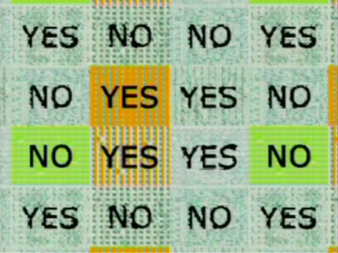
Author: Neven Korda, Slovenia, 2001, digital format, colour, 1′
The constant fragmentation and multiplication of squares, 4:3 planes, and the embedded words. These are taken from a never-finished project (Heaven and Earth, Alajbegović, Korda), which was to collect and analyse public figures’ short thoughts on cyberspace and virtual reality.
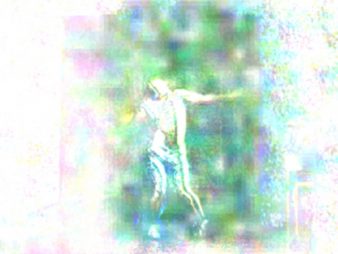
Avtor: Neven Korda, Slovenia, 2001, digital format, colour, 1′
Rhythmic repetition of graphic passwords on a substrate that vibrates just before it breaks up—a revival of the original phrases from the ’60s.
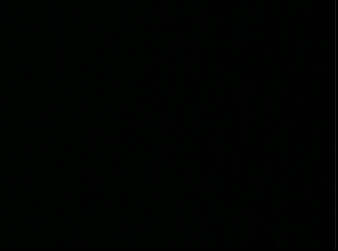
Author: Neven Korda, Slovenia, 2001, digital format, bw, 1′
An anti-globalist, anti-religious and progressive mantra.
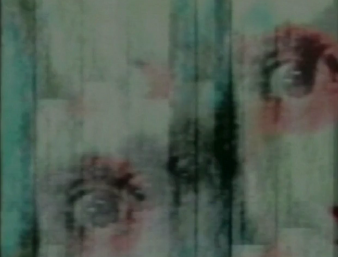
Author: Neven Korda, Slovenia, 2002, digital format, colour, 4′
The autumn still life is dedicated to the artist’s electronic archive, feedback loop and remnants from the early 1980s.
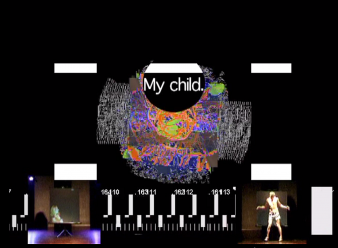
Author: Neven Korda, Slovenia, 2003, digital format, colour, 2′
A narrative of expectations and realities.
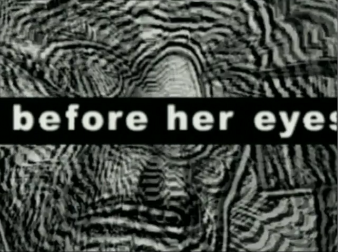
Author: Neven Korda, Slovenia, 2003, digital format, bw, 4′
Two nobelmen, an abbot, a soldier, a hungry dog and a prisoner. A husband and wife. Young and loving. A terrible deception has brought them here and the husband knows everything. Unfortunately he is stupefied and unable to speak. His thoughts. His thoughts shoot back and forth…
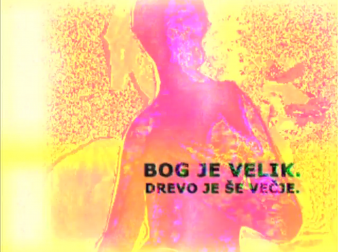
Author: Neven Korda, Slovenia, 2005, digital format, colour, 16′
The video object of the same name consisted of a monitor that said it was called the Taxidermist Monitor, a computer that processed the sound and image production and played back the result, and facsimiles of the original records or sources of the passwords used in Reincarnation.
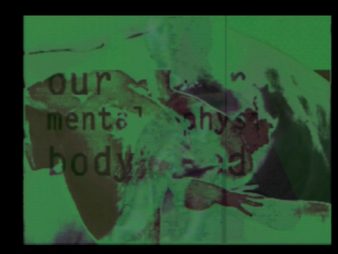
Author: Neven Korda, Slovenia, 2006, digital format, colour, 5′
Automatically jump between the five NNFs of the Angelic Wreath, in the manner of the endless overflows of club visualisations.
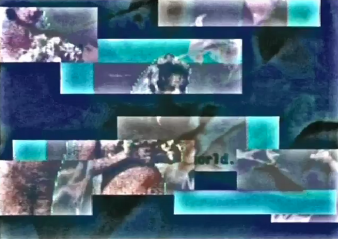
Author: Neven Korda, Slovenia, 2007, digital format, colour, 7′
All 5 New New Films, all the words of Reincarnation and Nomad, quotes from Jean Genet’s A Song of Love, Leni Riefenstahl’s Olympia, and snapshots of everyday life.
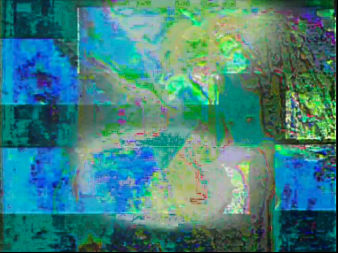
Autor: Neven Korda, Slovenia, 2007, digital format, colour, 8′
A visualised and voiced biography of Neven Korda.
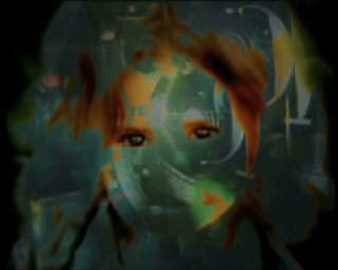
Author: Neven Korda, Slovenia, 2016, digital format, colour, 8′
Declaring war on the world.
There will also be an additional program on the Slovenian Film Database (BSF)
More info soon.
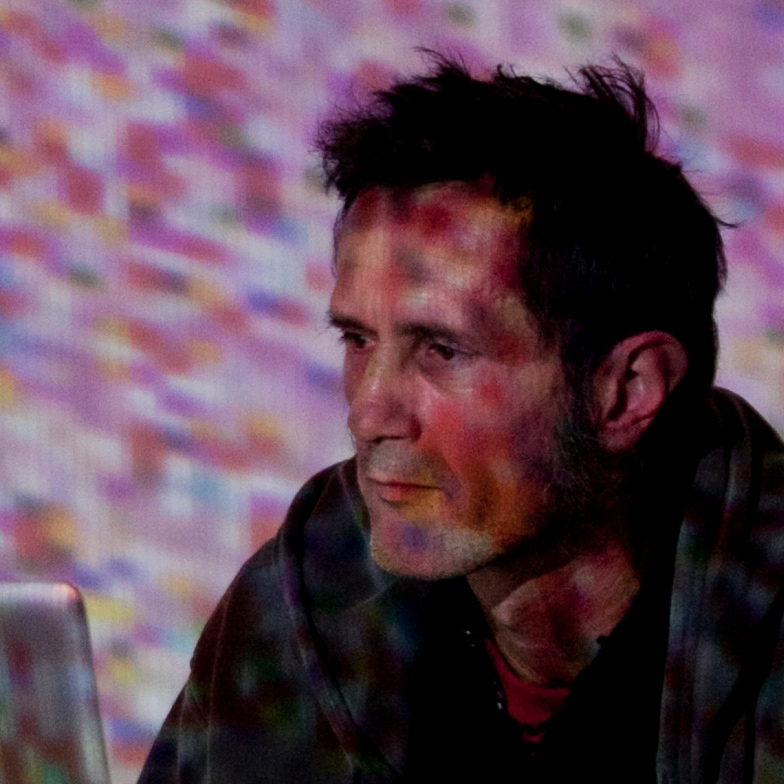 Neven Korda (1956) is a sociologist, filmmaker, videographer and multimedia artist with diverse artistic practices in performance and projected arts. His research focuses on video as a creative expression and a medium. He started the video in the early 1980s when affordable video equipment flooded the market and thus became available to outside institutions such as television. He was the co-founder and director of the theatre group FV 112/15 and co-founder and head of FV Video, FV Video, an independent video production company that has realized several artistic, FV Video Productions has produced several creative, music and documentary video projects. Between 1982 and 1988 President of the Music Section of the ŠKD Forum, head of its clubs and concert programmes. From 1983-1989, he was a member of the Borghesia, where he was responsible for directing performances and video clips and for the visuals in performances and concerts. V 90.
Neven Korda (1956) is a sociologist, filmmaker, videographer and multimedia artist with diverse artistic practices in performance and projected arts. His research focuses on video as a creative expression and a medium. He started the video in the early 1980s when affordable video equipment flooded the market and thus became available to outside institutions such as television. He was the co-founder and director of the theatre group FV 112/15 and co-founder and head of FV Video, FV Video, an independent video production company that has realized several artistic, FV Video Productions has produced several creative, music and documentary video projects. Between 1982 and 1988 President of the Music Section of the ŠKD Forum, head of its clubs and concert programmes. From 1983-1989, he was a member of the Borghesia, where he was responsible for directing performances and video clips and for the visuals in performances and concerts. V 90.
In the 90s, he worked in various video studios and on several television stations He was a video editor, post-production manager, and author of TV images and the director and producer of propaganda films, commercials, and TV shows. In this period, he worked as a director in an authorial pair with Zemira Alajbegović and made short films, TV programmes, and documentaries. At the turn of the millennium, he turned to researching, practising, and recording pure video art. He picked up where he left off in the second half of the 1980s. He returned to making theatrical performances and to original audiovisual forms. The manifesto of this was the conceptual series Novi novi film (New New Film) – holistic representations of the author’s image. At the same time, he continued to create music videos. Since the middle of the first decade of this millennium, the field of of his pure video with visualizations for club nights and especially for concert performances (VJ Barbato Kanak), and with creating video objects, intermedia installations, and performance lectures. He constantly used his old elements video and his artistic archive in new contexts to highlight the importance of the collision of memory and the simultaneous experience of video as a living event. He conceived and led the group manifestation of Parallel Worlds, which operated between 2006 and 2012 at the intersection of of club and gallery visual electronics. Video as a medium is addressed through the work on the video archive of his video practice – in the form of CD-ROM, spatial installations, a website and multimedia lectures – but also as a tutor and workshop facilitator in applied video and video archiving. (Photo: Miha Fras)
Curator: Robert Kuret
Co-production: SCCA-Ljubljana/DIVA Station and Slovenian Cinematheque
Partner: Slovenian Film Database (BSF)
Supported by: City of Ljubljana – Department of Culture
Thanks: Barbara Borčić, Miha Colner, Petja Grafenauer, Nikolai Jeffs, Nerina Kocjančič, Bogdan Lešnik, Majda Širca, Melita Zajc
![]()
![]()
![]()
![]()
![]()
![]()
